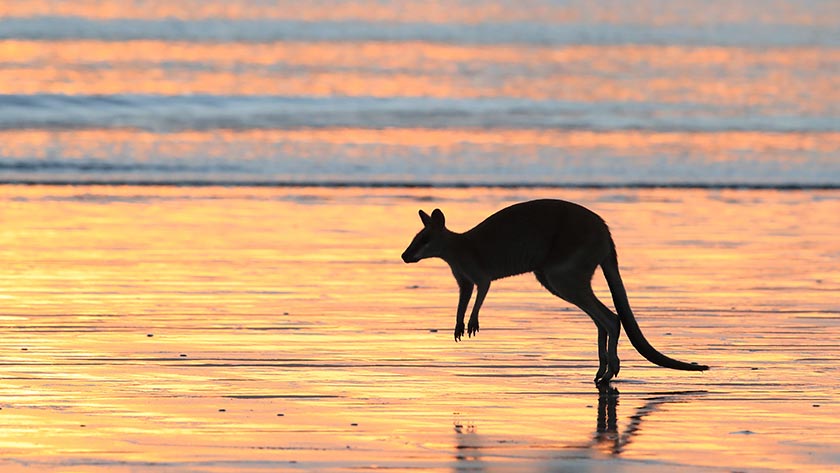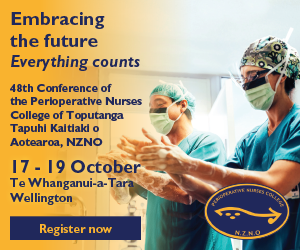It was hundreds of years ago that the first explorers navigated the vast ocean of Te Moana-nui-a-Kiwa in waka, using prevailing winds, the guidance of the stars – sheer guts – to make their way to these islands. An incredible feat.
Later arrivals had to embark on arduous journeys themselves.
Aotearoa is a nation of travellers, so it’s probably not surprising that taking another step across the Tasman Sea – now as simple as carrying a passport, Kiwi skills, and an Australian practising certificate – might be the next Great Migration for nurses.
With word seeping through from wards, clinics and practices of staff leaving New Zealand, Kai Tiaki Nursing New Zealand spoke to people within the health sector to find out whether the brain drain was real.
…nurses in Aotearoa are ‘fighting for pay parity, fighting for better conditions, fighting, mainly, for nursing’.
—Tracey Morgan
NZNO acting president, and first Māori vice president Tracey Morgan said she loved nursing, and Māori nursing. “That’s regardless of the money, that’s the passion of why we’re here.”
At one time, Morgan was going to head to Perth herself, before the arrival of COVID-19. Her children were living in Australia and she had been keen to head over.
“We’d actually sold our house and we were ready to go… [but then] I got approached to be a nurse manager here in a medical centre.”
Morgan ended up staying because of opportunities with the new role, but said heading to Australia came with plenty of its own opportunities for nurses.
“I’ve been talking to a lot of the nurses doing the agency nursing… they go away for six months, get an astronomical bank account, come back, pay off their mortgage, have a good couple of months of holiday, then go back again.”
Meanwhile, nurses in Aotearoa were “fighting for pay parity, fighting for better conditions, fighting, mainly, for nursing”, she said.
Nurses working in the Māori health sector in particular were doing it tough – facing pay rates on average 25 per cent lower than district health board (DHB) counterparts.
Morgan said there was already a shortage of Māori nurses in communities. “I know we’ve got Māori nurses [in the system], but a lot of them won’t leave the DHB… burnout is real.”
Why would a Māori nurse invest time in a system and not get recognised ‘when you can do the same in Australia and get paid more?’
—Kerri Nuku
NZNO kaiwhakahaere Kerri Nuku said a Māori nursing shortage in Aotearoa meant there was a risk there would be no cultural change in its organisations.
“Our systems already endorse us to be taught through a mainstream lens. Anybody that’s in a bachelor of Māori programme – some of the employers will say ‘is that a Weetbix qualification?’ So they’re continually undermining it.”
Why would a Māori nurse invest time in a system and not get recognised, she said, “when you can do the same in Australia and get paid more?”
All this raises the question of how big an impact the appeal of overseas work has had on nursing numbers.
The data is yet to stream through from the last 12 months, but anecdotal evidence is accumulating, rumours swirling.
One nurse, who did not wish to be named, told Kai Tiaki Nursing New Zealand she had heard there was a mass exodus from her hospital’s emergency department – the number of the departed ran into double figures.
The latest Nursing Council numbers leave it unclear whether there’s been a brain drain, or even gain (with nurses escaping back to fortress Aotearoa), since the start of the COVID-19 pandemic.
Council data suggests that till March 2020 at least, there had been a steady but achingly slow year-on-year climb in nursing numbers since 2016.
By the end of March last year, there were 58,866 nurses in Aotearoa, covering registered nurses, enrolled nurses and nurse practitioners.
This was a 1.8 per cent increase from the previous year (in line with percentage changes back to 2016). Overall nursing numbers had increased by about 5000 from 2016.
The numbers are not yet out on what happened in the 12 months since the start of lockdown in Aotearoa and the global spread of COVID-19.
Nurses would be ‘silly not to’ look at heading overseas after the Government’s pay freeze announcement.
—Simon Auty
However, NZNO board member Simon Auty, a Wellington theatre nurse, said in one week, in one unit in the Capital & Coast DHB catchment, they had lost seven nurses to Australia. Some were previously planning to leave, but not all, he said.
Nurses would be “silly not to” look at heading overseas after the Government’s pay freeze announcement, Auty said.
People could go to work in Australia where they could earn more money and also receive smartly-structured salaries that included the likes of tax-free portions tagged to buy appliances for newcomers getting set up in their new home.
There was a “massive shortage” of nurses in places like the US, he said. “And they’re prepared to pay a hell of a lot to get people,” he said.
There had been no workforce planning by successive governments in New Zealand for at least 40 years, he said.
He said nurses working for Māori health providers in particular where “there for the love” – earning less than their DHB counterparts.
Money matters
From October this year, the starting rate (step 1) for a qualified registered nurse (RN) working for Queensland Health, which operates the state’s public health system, would be NZ$79,749.
This RN band includes seven annual steps, with the midrange (S4) sitting at NZ$90,694, and the top (S7) at NZ$101,947.
The current district health board (DHB) collective agreement in New Zealand sets the starting rate (S1) for RNs at $54,034. This rises across seven annual steps to $77,386. It doesn’t even make the starting rate in Queensland, once converted into Australian dollars.
But things get even tougher for RNs working for Māori health providers.
A recent agreement shows the starting rate (S1) for RNs at one provider was $51,611, which went up five annual steps to $61,665.
The highest rate squeaks in just above the starting rate for RNs in DHBs, and well below the Queensland system.
Sunny in Queensland
Occasionally in the life of a nurse, you need to take stock – have a bit of a life audit. That is what is happening with one senior nurse, working in a hospital in a “moderate-sized” DHB.
He did not wish to be named – he hadn’t told his managers he was about to apply for an Australian practising certificate.
He’s weighing up the pros and cons of chucking in his Kiwi job and working somewhere sunny – Queensland sounds good right now.
A “demoralising” government pay freeze dropped right in the middle of DHB collective negotiations left a bitter taste in his mouth.
He will likely look at the “fly-in, fly-out” contract work approach.
Some nurses he’s spoken to loved their work in often-remote parts of Australia.
He was looking at Queensland. There were a lot of carrots being dangled by various agencies, he said.
If you look to work in remote rural location, they’ll pay a $10,000 bonus at the end of a two-year contract; he’s heard there’s options for tax-free portions of income, $10,000, tagged for set-up costs like utilities and rent.
Those are the upsides – but there’s downsides too.
“I can’t get family in Australia, I can’t get [his New Zealand] friends in Australia… it would be the financial reward that would make me feel valued for what I do.”
Either way, he thinks the Government needs to do more to encourage new recruits, and keep them once they graduate.
These days he’s sick of finding burnt-out nurses crying in drug rooms, sluice rooms and in their cars after a shift.
‘Ready for something simpler’
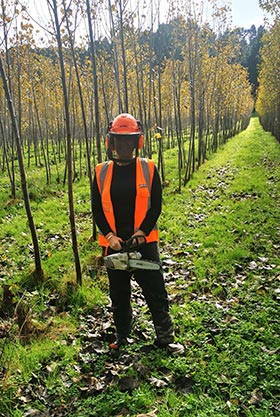
Lynda Deacon is wearing a new kind of PPE.
By the time this issue comes out, Deacon, registered nurse, will be gone from her paediatric ward. There will be no more children in her care – just saplings.
After more than 30 years in in nursing, Deacon has left the profession to become an orchard contractor: planting, pruning and harvesting trees.
Her working life, almost entirely in paediatrics, included stints in Starship, North Shore Hospital and Whangarei Hospital.
She moved to Western Australia in 2007 to become a clinical nurse specialist for the paediatric tertiary hospital in the state’s surgical and burns unit. After other roles, she returned to New Zealand in 2018.
Dealing with the abuse of children, and experiencing abuse herself, took their toll. Deacon is ready for something simpler.
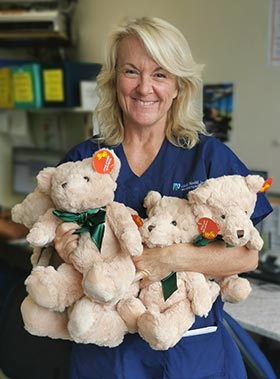 “I will be working Monday to Friday with some seasonal breaks. During these breaks I am planning to travel around New Zealand with my partner: fishing, hunting, hiking and picking up some seasonal work as we travel around our beautiful country.”
“I will be working Monday to Friday with some seasonal breaks. During these breaks I am planning to travel around New Zealand with my partner: fishing, hunting, hiking and picking up some seasonal work as we travel around our beautiful country.”
Deacon might have stayed in New Zealand, but she is worried for the future of nursing. “My biggest fear for nursing in New Zealand is the skill drain that we will experience if we do not improve how nursing is rewarded.”
She said work conditions, lifestyle and standard of living were similar in Western Australia, “but the pay and benefits for nursing is so much better”.
“I fear that we will lose many skilled staff to Australia if we don’t do something drastic.”
‘Second-class citizens’
The grass might be greener on the other side – but sometimes climbing the fence is a huge hassle.
NZNO lead organiser Paul Mathews has some words of advice for those considering the shift to Australia.
He said he went over to work in Australia about 30 years ago. On paper it looked great, but with living costs and different penal rates, he was actually about 25 per cent worse off.
“You’ve got to look at the big picture stuff, not just the base rate.”
He said nurses, and Kiwis in general, forgot that with changes to immigration status for New Zealanders, “we’re effectively second-class citizens” over the ditch.
“We can access absolutely nothing over there. If something happens to you, ‘you’re on your own mate’.”
Nurses needed to be careful: while they might be worse off on an hourly rate in Aotearoa, there were social services and the likes of ACC that were simply unavailable in Australia.
“If we have any kind of responsibility to our members, it’s just about saying ‘have you thought about the big picture: have you thought about where you stand if you fall over and break your leg… if you develop multiple sclerosis or have a stroke?'”
So with new generations coming into nursing, skyrocketing rental and housing costs, stagnant pay and tough conditions, nurses have to decide whether they will stay or go.
There are risks with leaving, and losses. Not least of all separation from whānau, friends, and islands to which our ancestors journeyed – maybe recently, maybe 800 years past.
In the end, nurses face the age old decision between pragmatism and something else – something found, in a completely non-clinical way, in the heart.
Opinion – Where’s the strategy?
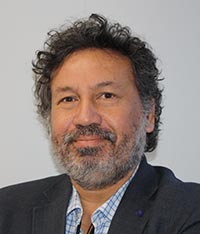
The Government is at a crossroads with its strategy for keeping and building its health-care workforce. Or rather, there doesn’t appear to be a strategy.
The pay freeze, dropped midway through district health board (DHB) collective agreement negotiations, couldn’t have made Australia more appealing to some nurses than if the Government had handed them tickets and waved farewell from the airport.
This, and a weak initial offer by DHBs in protracted negotiations, were still only part of the puzzle.
There are caregivers, nurses, midwives, working in all areas of the health system, struggling to make ends meet from week to week.
This includes nurses working for Māori health providers who, even at their highest paid, scrape in at the bottom of the band for DHB counterparts.
With internationally sought-after skills, a tough job and little appreciation in Aotearoa, why wouldn’t our nurses look to leave the country?
– Joel Maxwell, co-editor


